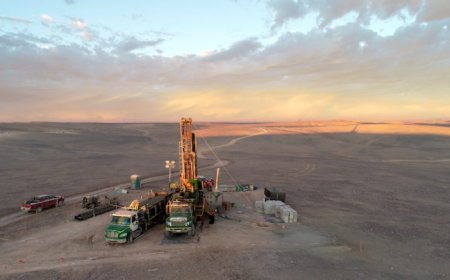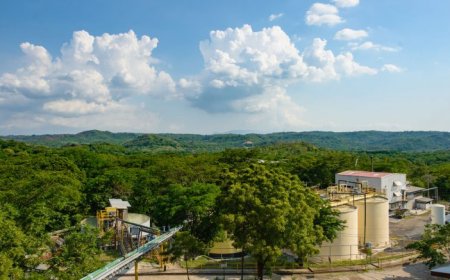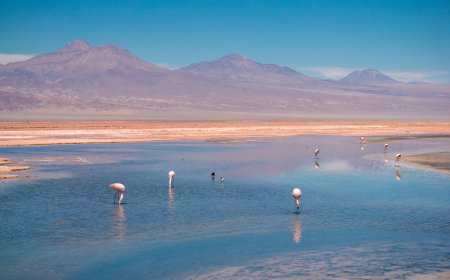Mining analyst-turned-Vital Metals CEO eyes much larger Nechalacho reboot
After spending the past 15 years as a senior mining analyst at Haywood Securities, Vital Metals’ (ASX: VML) CEO and managing director Geordie Mark is convinced that hitting a home run in developing the Nechalacho rare earths project in the Northwest Territories requires a totally new approach. The task also calls for building scale if a long-lived low-cost operation is to succeed, following the failure of its processing division and a lifeline Chinese investment in September last year.


Attracted by the potential of Nechalacho and the opportunity to transform the company amidst the growing demand for rare earth elements in the tech and electric vehicle (EV) markets, Mark seeks to put his years examining how miners function effectively into practice in his first role at the helm of a public company. “It’s an opportunity to build a meaningful operation from scratch that could become a cornerstone of rare earths supply into the emerging North American electric vehicle supply chain,” he told The Northern Miner in an interview.

Taking the reins at the junior in October last year following the departure of John Dorward in March, Mark contemplates a fundamental pivot to a bulk tonnage operation targeting the lighter rare earths like praseodymium and neodymium. Vital’s former management team and previous strategy largely built on the vision established by the project’s initial proponent, Avalon Advanced Materials (TSX: AVL), targeting a smaller-scale, high-value heavy rare earths operation. Nechalacho has been known since the 1970s to contain high-grade rare earths mineralization. Avalon acquired the property in the mid-2000s, with Vital acquiring near-surface resources in 2019.
Mark, in contrast, suggests a new strategy leveraging the roughly 120 million tonnes of resources outlined across all categories rather than laser-focusing on a deeper, more technical, and higher-risk fraction of the overall opportunity.
“Our aim is to develop one of North America’s most significant rare earth deposits into a long-lived cornerstone supplier of rare earths for the North American market,” he said on the sidelines of an industry event in Vancouver.
Mark emphasized the importance of completing a thorough scoping study for Nechalacho, focusing on long-term economic and operational viability rather than just exploration. Vital stands out for having proceeded with plant construction without publishing any economic studies.
“The comprehensive scoping study we’re undertaking is crucial. It’s not just about exploring; it’s about ensuring the economic and operational feasibility of Nechalacho for the long term,” Mark said.
The CEO expects demand (and prices) for praseodymium and neodymium to rise exponentially in the next decade, in step with the better-than-forecast adoption rates of EVs in China and Europe, with the United States and elsewhere expected to catch up rapidly, he said.
An assessment last year by Adamas Intelligence shows that neodymium-praseodymium demand is forecast to rise by 48% by 2050. The firm’s analysts have doubled their neodymium oxide price forecast to an 8.3% compound annual growth rate through 2035.
With over 25 years in the resources sector, Mark’s expertise spans industry and academia, including a role as a Logan Fellow and lecturer in economic geology at Monash University in Melbourne, and a PhD from James Cook University in northern Queensland.
Management refresh
Mark’s appointment at Vital was part of a strategic refresh for the company’s board and executive management after Vital’s processing subsidiary redeclared bankruptcy last September.
Despite the company’s failure to advance Nechalacho and fulfill an offtake agreement with Norway-based REEtec, Mark sees the potential for Nechalacho to feed into the rapidly emerging North American EV supply chain. During the 2021-2023 period when Nechalacho was mining on a bulk-sample basis, it was officially classified as a demonstration project by the Mackenzie Valley Land and Water Board. Mark hopes to establish an operation potentially rivalling MP Materials’ (NYSE: MP) Mountain Pass mine in California, North America’s only producing rare earths mine and one of the biggest in the world, producing about 15% of global output of the 17 rare metals.
After Vital’s processing arm was put into bankruptcy, it began liquidating assets related to its partially completed $55-million plant in Saskatoon, Sask. The decision came after an operations review found the plant wasn’t economical.
Mark ascribes the plant’s failure to scaling difficulties, fluctuating market conditions, significant cost overruns, impacts of the COVID-19 pandemic, and strategic management decisions.
On Oct. 27, Shenghe Resources, a Chinese rare earth miner, agreed to acquire a 9.99% stake in Vital for an initial A$5.9 million ($3.8 million), providing cash Vital needs to advance Nechalacho. Mark said that this investment is passive and focused on its other asset, Wigu Hill in Tanzania, and does not influence the daily operations or control of Nechalacho, ensuring Vital’s autonomy and potentially avoiding federal scrutiny of deals involving Chinese companies.
As part of the management shakeup, Mark also brought Natalie Pietrzak-Renaud on board as vice president of exploration. She brings over two decades of diverse geological expertise in the resources sector, including a track record of in-depth rare earth system analysis, geological modelling, metallurgical knowledge, and material sorting analysis.
Pietrzak-Renaud will plan this year’s exploration program to delineate the near-surface deposit’s high-grade portions, upgrade inferred resources, and expand the deposit’s margins.
She’ll also lead the charge on an upcoming scoping study, planned for release in December. The study will include the new resource and an updated geological model, integrated mineralogical and chemical analysis (metallurgical domain model generation), and mechanical and chemical processing studies.
Scaling the plan
Vital in February last year announced an updated resource estimate for the Tardiff Upper Zone at Nechalacho, incorporating drilling up to year-end 2022. Tardiff hosts 119 million tonnes at 1.4% total rare earth oxides for 1.67 million tonnes of rare earths, a 26% increase over the previous December 2019 estimate. Of interest to Mark is the 19% increase of neodymium and praseodymium over the last estimate to 416,000 tonnes, together grading 0.35%.
“Tardiff is one of the highest-grade rare earth deposits in the world and the only rare earth project capable of beneficiation solely by ore sorting,” he says.
Mark leverages existing data and new exploration techniques for Tardiff’s development plan, benefitting from its ‘pancake’ profile for scalable mining. The 2023 drilling at Tardiff showed high-grade rare earths, with significant results still pending, which will inform an imminent resource update and future drilling strategies.
Located 110 km by ice road southeast of Yellowknife, the area south of the territorial capital is rich in existing infrastructure. At this early stage, Mark says the plan would probably entail shipping concentrate by barge from Yellowknife across Great Slave Lake to the railhead at Hay River, from where it has access to the North American railway system, which ranks as one of the lowest-cost freight networks globally, according to Mark.
Nechalacho includes a 40-person camp and airstrip, with more than $120 million spent on drilling, permitting and development by previous owners.
Closing at A0.5¢ per share in Sydney on Jan. 25, Vital’s equity is down 82% over the 12 months, reaching a high of A9¢ in March 2021. It has an A$30 million ($26.6 million) market capitalization.




















